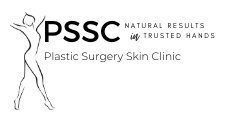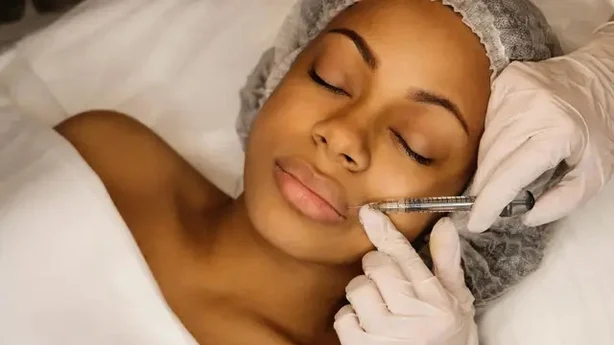Despite having rockstar popularity, Botox is still largely misunderstood, enigmatic even. A lot of people are dismissive towards it if not apprehensive, ambivalent, or over-eager about it. With that said, it’s worth testing how much you know about Botox to understand its truths and myths, especially if you plan to get the treatment. This post will serve as trivia, which will myth-bust some common claims and preconceived notions about the treatment.
1. Botox Treatment Works Right Away.
Sorry, but the answer to this belief is a big, glaring “FALSE”. Botox is a powerful treatment, but not a miracle one. Its skin-tightening, anti-aging effects take 3-4 days to kick in. If you want to see some dramatic changes, wait two weeks.
All things considered, it’s a short wait for such a minimally invasive treatment. Two weeks go by in a blink anyway!
2. Botox is Just a Brand Name.
If you answered “True”, then give yourself some points (and a pat on the back). Botox is a trademarked name for the active ingredient, botulinum toxin, the neurotoxin derived from the bacterium Clostridium botulinum. Botox is just a portmanteau of botulinum toxin, and frankly, it rolls off the tongue a lot better.
With that said, there are other branded forms of botulinum neurotoxin, including Azzalure, Bocouture, Dysport, Vistabel, and Xeomin. Botox just happens to be the most recognized one.
3. Botox Trains Your Muscles, Which Can Reduce Your Treatment Frequency.
Yep, the answer is “true”—and some of you thought that Botox is just a “surface level” treatment!
Remember, Botox is a neurotoxin, so it penetrates deeper than skin. It works at the neuromuscular junction where it blocks the release of acetylcholine, a neurotransmitter that’s necessary for muscle movement. This induces a partial state of muscle paralysis, so the muscles in the application area don’t contract as normal. As a result, the dermal tissue above relaxes and softens, which reduces the appearance of wrinkles for a more youthful look.
But this also trains the muscles to relax on their own. Repeated use of Botox can reduce the strength of muscles in the applied area, so they contract less on their own, leading to a smoother appearance over time. As a result, patients find that they need fewer Botox treatments over time.
4. Botox is Unsafe With Unknown Long-Term Side Effects.
As sinister as the terms “neurotoxin” and “botulism” sound, the answer is “false”, Botox is not unsafe. It has a long record of safety, is FDA-approved, and is used routinely in clinics worldwide. At worst, patients might experience minor discomfort while receiving the shot, and mild swelling and bruising afterward, but nothing else.
And in terms of long-term safety, researchers haven’t found any risks to one’s health. The treatments may become less effective once you reach a certain age range but cause no harm to your health or well-being.
5. A Botox Treatment Lasts No More than 10 Minutes.
Yep, if you said “true”, good on you. Botox is an in-and-out procedure—you can sneak it in between any of your other appointments without any interruption. As the header says, it takes no more than 10 minutes.
With that said, your very first appointment will probably last longer, because practitioners like us, here at PSSC, have to conduct some examinations beforehand. That gives us a more comprehensive understanding of your aesthetic goals.
6. When You Stop Botox Treatment, Your Wrinkles Come Roaring Back.
Nope, false, false, and false. We understand the line of thinking here, but remember what we said above— Botox trains muscles to relax more over time. So yes, if you pause your treatments, your wrinkles might slowly come back, but they certainly won’t go back to what they were before receiving the shot.
7. Botox May Treat Chronic Conditions, Both Physical and Mental.
Trick question—and the answer is “true”! Since Botox is a neurotoxin, it has a powerful effect on nerve signals, namely, the ability to block them, which can mean relief for people dealing with chronic health issues.
For starters, it can help reduce chronic pain and migraines. It can also reduce the severity of hyperhidrosis, the medical term for excessive sweating which researchers believe is caused by faulty acetylcholine production. And researchers are now even seeing evidence that it may help treat depression and low mood.
So next time you see an ad for Botox somewhere, don’t assume it’s only for people looking for a fountain of youth. Some individuals are seeking relief from chronic conditions.
8. Botox Treatment Isn’t Recommended for Younger Patients.
As long as you’re 18+, you’re not too young to get Botox. So even if you’re a spry, whippersnapper in your 20s, you can get a few Botox treatments.
Of course, the goal of treatment here is different, compared to someone in their 40s or 50s. As a younger patient, the goal of treatment is to slow down and stave off the formation of deep wrinkles. Of course, you can’t prevent wrinkles completely, but it can preserve a youthful look even as you age.
9. Botox is Virtually Painless and Side-Effect-Free.
Believe the hype—the answer here is “true”. Yes, needles aren’t fun, especially for the kind of people who need a lollipop after getting one, but Botox shots aren’t painful at all. The most you’ll feel is a pinch, and the use of a numbing cream renders the area numb, so you feel next to nothing.
In terms of side effects, some patients report some mild swelling and bruising in the area, but nothing more. As we mentioned above, Botox has a high safety profile, so there’s marginal risk associated with it.
10. Botox is the Result of Many Years of Research.
The surprising answer to this question is “false”—researchers weren’t looking for a novel way to tighten wrinkles. What actually happened was that way back in the 1820s, a German scientist named Justinus Kerner published the first descriptions of the foodborne illness we now know as botulism. He was also the first person to suggest that it was a neurotoxin and could possibly be used therapeutically.
In 1895, Belgian scientist Emile Pierre van Ermengem discovered botulism while investigating the cause of a food poisoning outbreak in Belgium, which was traced back to a contaminated ham.
In the 1940s, Dr. Edward Schantz isolated botulinum toxin in a crystalline form.
In the 1970s, doctors began using it as a therapeutic treatment for strabismus, also known as crossed eyes. It wasn’t until 2002 that the FDA approved Botox as a safe treatment for wrinkles.
So yes, although science recognized that it could have cosmetic use, it’s original purpose was as a medical treatment.
A Dose of Confidence
We’ve hopefully demystified some of the claims and beliefs related to Botox. It’s a marvel of modern cosmetics and can do a lot more than what it’s given credit for. It’s not an anti-aging panacea, or Ponce de Leon’s fountain of youth, but it can do wonders to restore a smoother appearance.
Of course, not everyone is qualified to apply Botox professionally, so it’s crucial to find the right clinic. At PSSC, our practitioners are well-versed with Botox treatment for wrinkles and fine lines in various areas of the body. We use expert facial analysis to determine the course of treatment you’ll need so that you get the anti-aging results you deserve. Get in touch with us to begin your Botox journey now!

